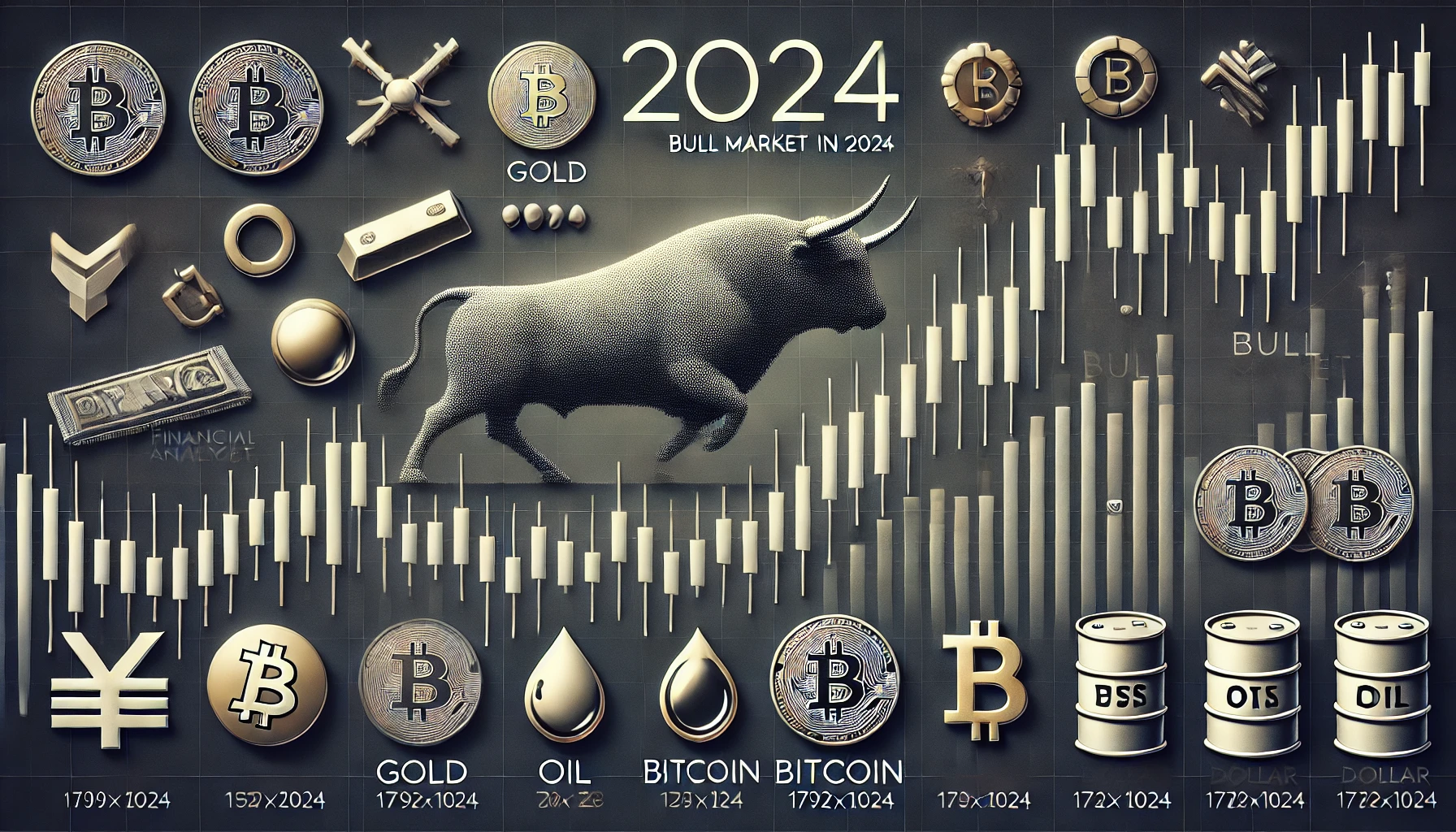Address
304 North Cardinal
St. Dorchester Center, MA 02124
Work Hours
Monday to Friday: 7AM - 7PM
Weekend: 10AM - 5PM
Address
304 North Cardinal
St. Dorchester Center, MA 02124
Work Hours
Monday to Friday: 7AM - 7PM
Weekend: 10AM - 5PM

We’re doing an in-depth analysis of the bull market 2024 and what we’ve found out until now is pretty fascinating, sit tight and we’ll go through the research.
Short answer: Yes, but only until the Yield curve reinverts. Let us explain…
Market cycles are something investors need to have a keen eye for, especially when It comes to timing. And as we know, timing is 50% of the job when talking about making significant investments.
A normal bull market cycle lasts on average about 5 years while the whole bull MACRO cycle lasts 10-20 years before hell comes raining from the heavens.
Well, there are a lot of factors that come into play when determining whether where are on a sustainable bull market or not, but the main indicator that investors must look out for are Federal reserve interest rates, specifically the 10 year Treasury note minus the 3 month treasury bill commonly known as “The Yield Curve”.
The yield curve has been the main indicator that investors use to foresee when a recession is possibly going to happen..
The base for the US financial system: Treasury Bills, Bonds and the FED.
The U.S. government issues debt securities known as Treasury bills, notes, and bonds.
The difference among them mainly lies in their maturity periods: Treasury bills are short-term (a few days to 52 weeks), notes are medium-term (2 to 10 years), and bonds are long-term (20 to 30 years).
These securities are essentially loans to the government, with the promise of being paid back with interest. The yield is the return an investor earns on these securities.

The yield curve is a graph that plots the yields of Treasury securities at different maturity points at a given time.
Typically, the curve plots yields from the shortest maturity (like 1-month T-bills) to the longest (30-year T-bonds).
The most watched part of the yield curve is the spread between the yields of short-term and long-term Treasuries, often between the 3-month and 10-year maturities. You can consult the live yield curve here.
A normal yield curve is upward-sloping, indicating that longer-term securities have higher yields than shorter-term ones. This reflects the higher risk and longer time value of money associated with long-term investments.
An inverted yield curve occurs when short-term yields are higher than long-term yields, which is uncommon and considered a warning sign in the economy.
As we can see now the yield curve has been inverted now for over 1.5 years which is a really dangerous sign for the economy because once that yield curve reinverts and if the FED can’t pivot monetary policy properly we could see a hard landing as opposed to the “soft landing” most economists are expecting.
Bull markets are periods of rising stock prices, typically defined by a 20% or more increase from recent lows. Understanding the underlying causes and duration of these bull markets can provide valuable insights into potential future trends.
Various economic, fiscal, and geopolitical factors have historically played pivotal roles in shaping these cycles, let’s take a look at some of the policies and factors which influence market cycles…
One of the most significant drivers of bull markets in the modern era has been the implementation of Quantitative Easing (QE) by central banks, notably the Federal Reserve.
QE involves the purchase of long-term securities to inject liquidity into the financial system, thereby lowering interest rates and encouraging borrowing and investing.
For example, the post-2008 financial crisis recovery saw the Fed expanding its balance sheet from about $900 billion in 2008 to over $4 trillion by 2014, helping fuel a prolonged bull market.
The chart below illustrates the correlation between the Fed’s balance sheet expansion and the S&P 500 performance from 2008 to 2021:
In addition to monetary policy, fiscal stimuli such as tax cuts, increased government spending, and direct financial aid to citizens also contribute significantly to economic recovery and market performance.
The COVID-19 pandemic response included trillions in fiscal stimulus across various economies, leading to a rapid recovery in stock prices following the March 2020 crash.

Geopolitical events also influence market cycles. For instance, easing of trade tensions or successful negotiation of trade deals often boosts market confidence, leading to rallies. Conversely, the onset of war or political instability can trigger downturns. A notable example is the market’s response to easing tensions between the U.S. and China in early 2019, which helped extend the bull market initiated in 2009.
Statistical Data and Trends
For 2024, analysts predict a varied earnings landscape. Sectors like technology and healthcare are expected to show robust growth due to continued innovation and demographic trends.
However, industries heavily reliant on discretionary spending could face hurdles if consumer confidence wanes. Investors will be wise to monitor quarterly earnings reports for signs of sustained profitability.
We do expect some volatility in corporate earnings but we do expect tech and industrial companies to come out ahead this 2024.
The cash reserve is cash on hand relative to a company’s liabilities—it provides insight into financial health and risk management. In 2024, as interest rates stabilize, companies with higher cash reserves may be better positioned to invest in growth opportunities or weather potential economic downturns.
A rising trend in cash reserves among S&P 500 companies suggests cautious optimism among CFOs, wary of potential market volatility as it has been happening throughout this late Q3 2024.
An example of this is how just before black Monday on August 5th warren buffet sold around 211 billion dollars worth of apple stock and other securities. This leaves Buffet’s Berkshire Hathaway with a massive cash pile of around 270bn. Is he preparing for a crash?
We can speculate all we want but before reaching some conclusions let’s take a look at some more data.
The yield curve, often observed as a recession predictor, has shown signs of flattening in late 2023, with expectations of an inversion by mid-2025.
Such inversions, where short-term yields exceed long-term ones, have historically preceded recessions by 12 to 18 months. We as investors should keep a close eye on this trend, as an early inversion could accelerate defensive investment strategies.
While predicting exact market tops and bottoms is notoriously difficult, several indicators suggest a potential correction by mid or late 2025 or early 2026. High market valuations, geopolitical tensions, and tightening monetary policies are factors that could converge to unsettle markets.
As a way to reduce risk we as investors should consider diversifying portfolios or increasing holdings in traditionally safer assets like bonds or gold.
As a side note, Warren Buffet has also been stockpiling US treasury notes since early 2023, should this type of behavior for a professional investor tell us something? Only time will tell.
While we’re on a full bull market in 2024, we as investors should navigate with caution, keeping an eye on economic indicators and sector-specific trends. By staying informed and agile, we as investors can capitalize on opportunities that arise and mitigate risks in a fluctuating market environment.
We here at Knollmont thank you for reading this article and hope it was of great insight, for more information and market insights please visit our Market insights page. Have a wonderful day!